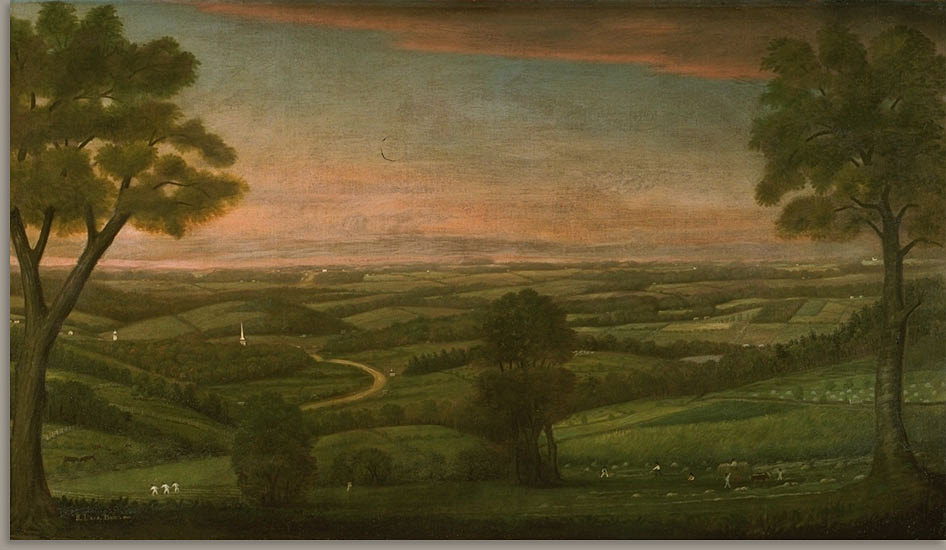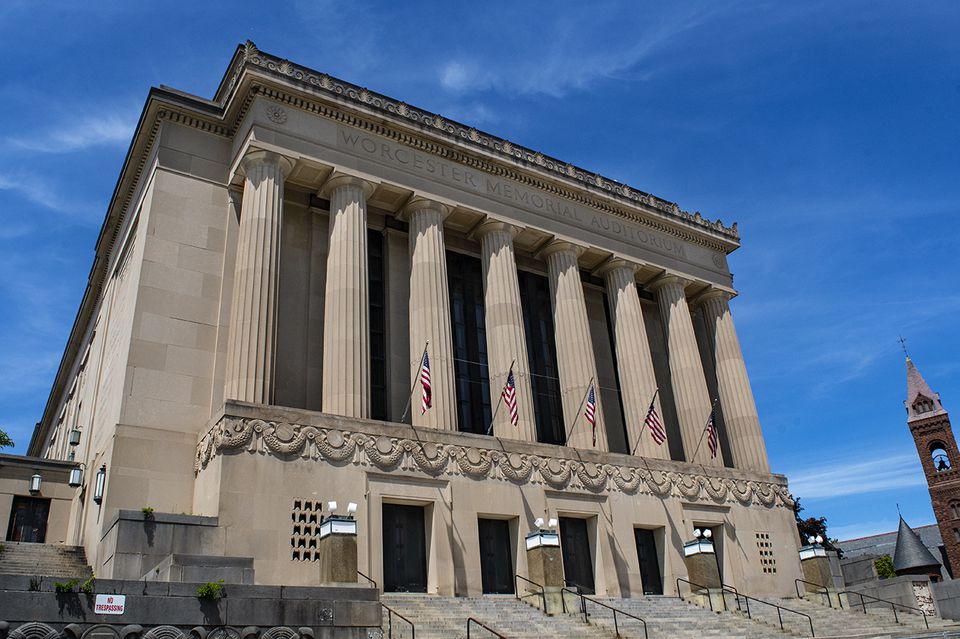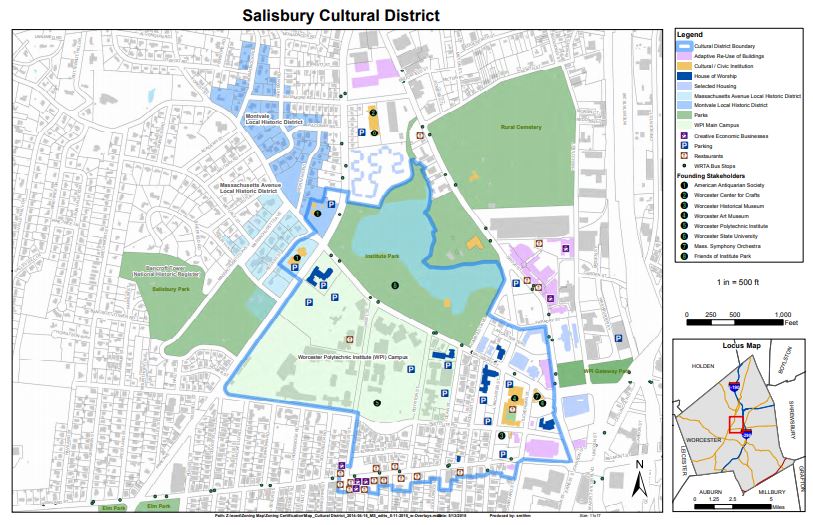|
For this installment of "This Old Neighborhood," AHF decided to try something different: creating a map of Worcester shortly after this third and final establishment. We drew from a variety of eighteenth and nineteenth-century sources to reconstruct the town as it appeared in 1720. The map includes major roads, defensive garrisons, houses of worship, a burying ground, saw/grist mills, a tavern, and nineteen of the fifty-eight residences reported to have been built by that early point in the town's history. All locations are approximate.
In 1720, Worcester's population is estimated to have numbered two hundred. The town was largely pastoral, yet already saw mills and grist mills - the beginnings of industry - were appearing along the many streams that coursed through the hilly terrain. A web of footpaths criss-crossed the meadows and forests, skirting beaver ponds, many following Nipmuc routes. Some had been widened into roads, which remain important thoroughfares in Worcester today: Main Street, Plantation Street, Pleasant Street, Burncoat Street... The town quickly expanded, growing more populous and prosperous by the year. How to use the map: Click the rectangular icon in the map's upper left corner to access the key, description, and sources. Clicking on the map's individual icons (e.g. houses, horses, etc.) will cause labels and descriptions of each feature to pop up. To zoom in and out, click the + and - symbols in the bottom left corner. Approaching the Worcester Memorial Auditorium from the east this week, you'll be greeted by an unfamiliar sight - a dark blue signpost welcoming you to the "Salisbury District" in capital letters. This wayfinding sign is among the first to be installed throughout the city as part of what MassLive News describes as a months-long process "to add public art and a sense of identity to some of Worcester's neighborhoods and popular locations." Artwork will eventually be incorporated to the base of the signs. In addition to the marker in Lincoln Square, the City so far has installed three others on Shrewsbury Street, Washington Square, and MLK Jr. Boulevard. The total number of wayfinders has yet to be disclosed.
The wayfinder in Lincoln Square will help to establish the future renovated Aud as the gateway between Worcester's downtown and the cultural and educational attractions immediately to the north. The marker publicly identifies a blighted corner of the city as the southeastern edge of the Salisbury Cultural District. The area includes many institutions that already invigorate both the neighborhood and the city as a whole, and which the Aud project is intended to complement. The next time you visit Worcester, make sure to stop by any of the Salisbury Cultural District's sites:
The Worcester Business Journal recently highlighted AHF's pending purchase agreement for the Worcester Memorial Auditorium in an article on recent investment in Lincoln Square. The Aud is one of three historic buildings in the square that are slated for redevelopment by Boston-based companies and organizations. The other two include the former Worcester County Courthouse - currently under construction to become a $58-million apartment project - and the old Lincoln Square Boys Club, potential educational, office, medical, or biotech space. The Journal describes the Aud as "arguably the most historic out of the three," and AHF's project as "the most ambitious."
Read the full article here: https://www.wbjournal.com/article/at-least-170-million-worth-of-redevelopment-projects-could-transform-lincoln-square?utm_source=Newsletter&utm_medium=email&utm_content=Three+Lincoln+Square+projects+%7C+Worcester+s+biotech+cluster&utm_campaign=Daily+061119 The Aud featured again in a recent Telegram op-ed about renewed investment in Lincoln Square. The Worcester County Courthouse and former Boys Club, two vacant, historic buildings adjacent to the auditorium, are also slated for redevelopment. Nick Kotsopoulos writes: What is happening at the north end of downtown at Lincoln Square...is something that has the potential of being transformative for that part of the downtown, while also preserving three historic and architecturally significant buildings. A major gateway to the downtown, Lincoln Square has long had the unique distinction of being home to three white elephants: the former Worcester County Courthouse building, the former Lincoln Square Boys Club building and the Worcester Memorial Auditorium. All three buildings have been vacant and been long-neglected for years, and their futures appeared uncertain at best if not downright hopeless...But it appears that the pieces to the Lincoln Square puzzle are finally beginning to fall into place. |
AuthorArchitectural Heritage Foundation (AHF) is working to preserve and redevelop the Worcester Memorial Auditorium as a cutting-edge center for digital innovation. Archives
May 2022
Categories
All
|




 RSS Feed
RSS Feed